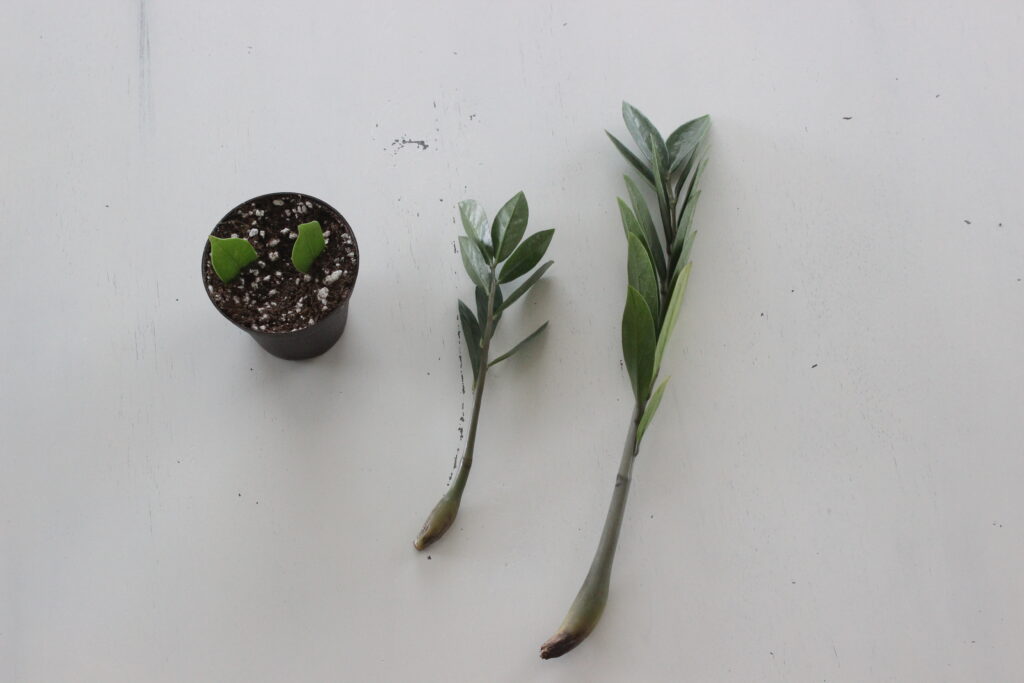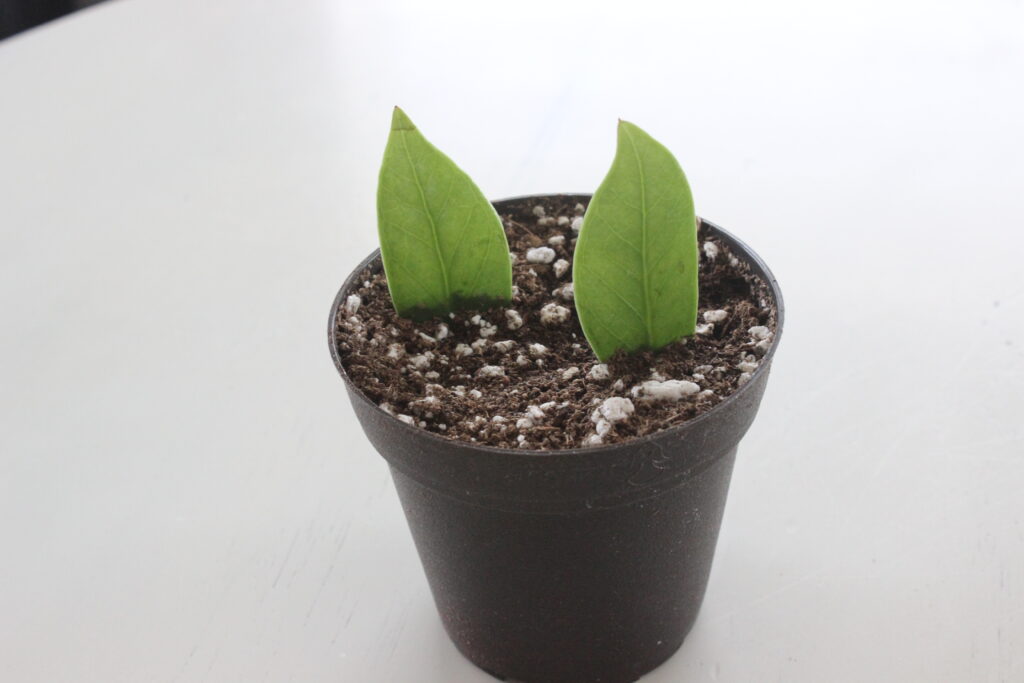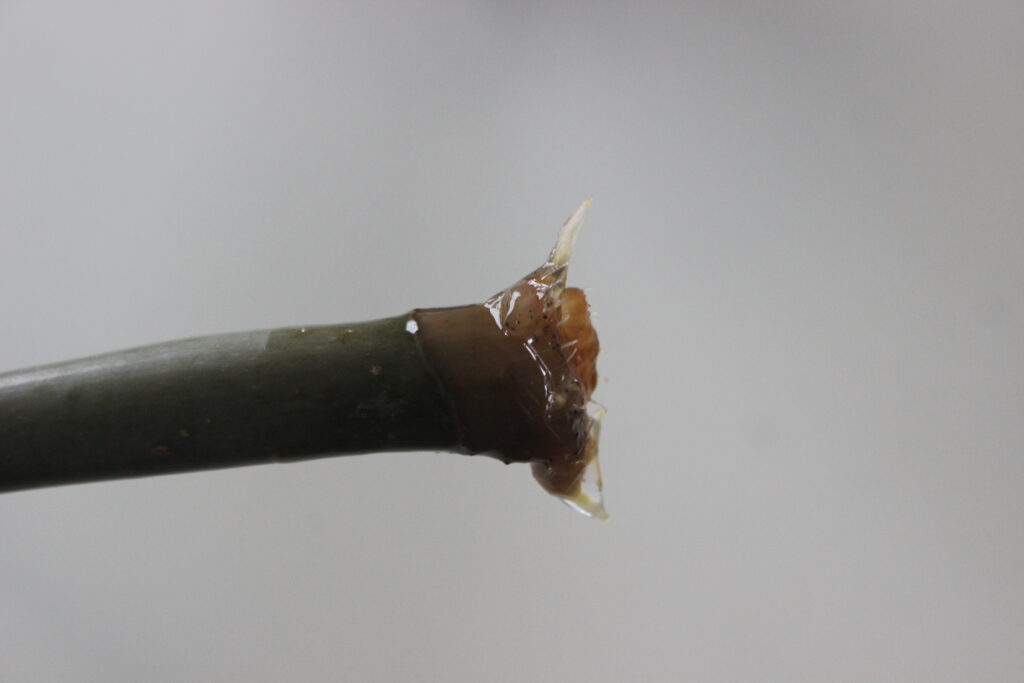A simple google search will uncover a wide range of information about the ZZ plant formally know as Zamioculcus zamifolia. ZZ plant propagation is simple, however it takes a really long time. It is a very slow process. In this propagation experiment I wanted to test which method would work best in y environment. It spanned a total of 2.5 months and I have to say the results were pretty surprising.
On one of my trips to Lowe’s I noticed they had some ZZ plants in bad shape. There were leaves and stalks laying on the ground. I asked permission to take home a couple leaves and stalks and they kindly agreed.
ZZ Water Propagation:
First, I cut the rotten end off of one stalk and place it in a tall vase with distilled water. After about a month, there appeared to be something happening, but I wasn’t sure what it was. At the two month check, there were clear signs of growth and the beginning of roots.
ZZ Leaf Propagation:
My past luck with leaf propagation has not extended paste rhizome stage. One lesson I learned during this process is that while the rhizomes are forming, sometime around the 6 month mark, the leaf will wither away. Not to fret! This is part of the process. I have thrown away good propagation thinking the leaves were dead or damaged. This was not the case!
Propagating Zamioculcus zamifolia by leaf takes a long time. At month one, there was a bump on the end of the leaf. By month two there were visible roots and the beginnings of small rhizomes.
ZZ Stem Soil Propagation:
This process was the most surprising to me. At month one, it appeared that the end of the stem had rotted away and hollowed out. I continued on and checked back at month two to find a perfect round rhizome!!
Conclusion:
It is clear that ZZ plant propagation by stem cutting will get you the quickest results. Roots were reached in all cases within two months. I hope that within the year I will have a new Zamioculcus zamifolia to add to my collection.
ZZ Plant Care:
ZZ plants are are a lot like succulents and therefore are drought tolerant. They work well in indirect bright light but can take low light. Just be warned that if you are working with a low light situation, you ZZ plant will be droopy and sag rather than stand up tall and straight. ZZ plants like to be left alone and enjoy being root bound. If potting a ZZ, be careful not to choose a pot that is too large.
If you are into plant propagation, check out this post on propagating Crassula conjuncta.




